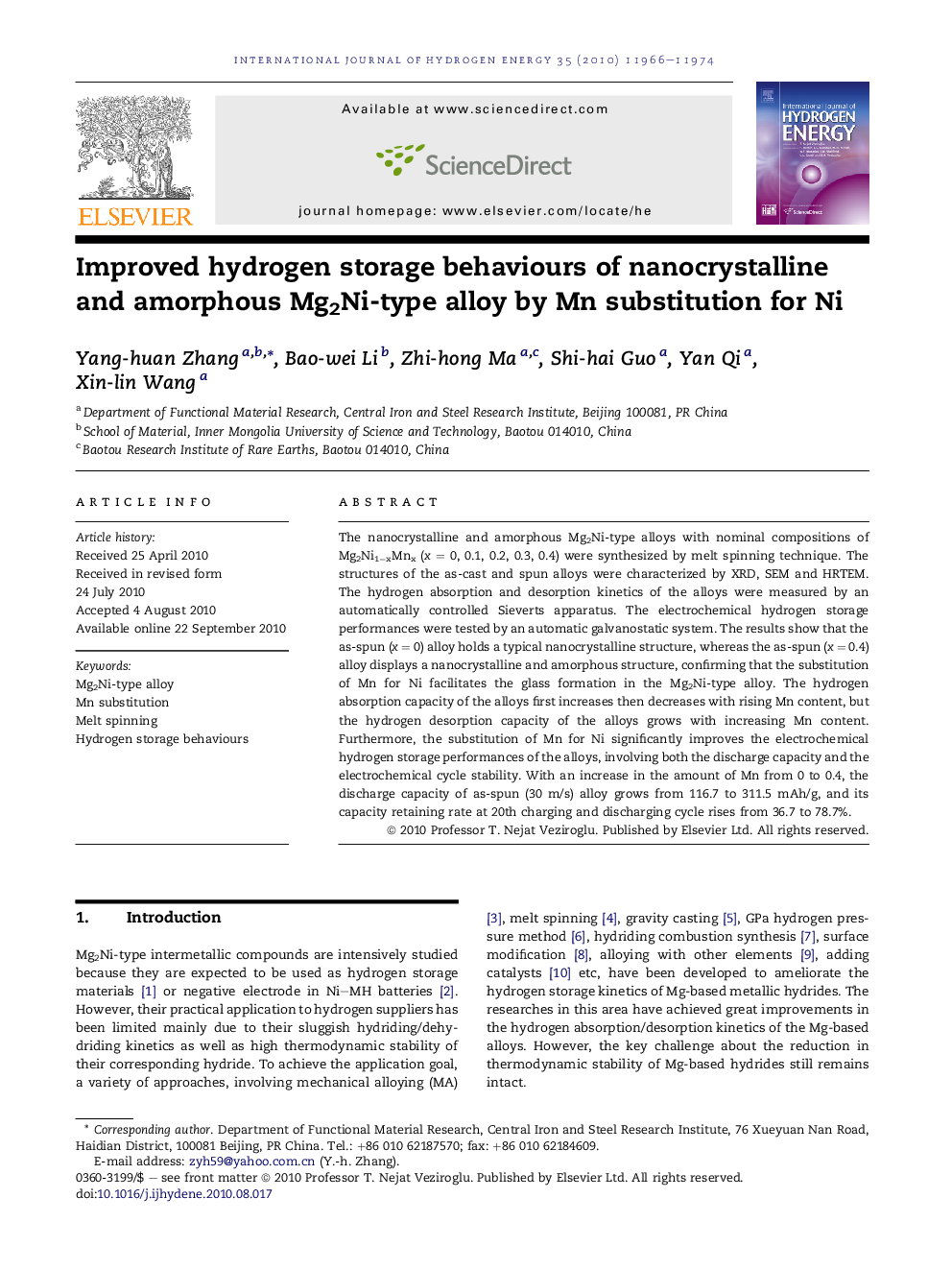| Article ID | Journal | Published Year | Pages | File Type |
|---|---|---|---|---|
| 1272565 | International Journal of Hydrogen Energy | 2010 | 9 Pages |
The nanocrystalline and amorphous Mg2Ni-type alloys with nominal compositions of Mg2Ni1−xMnx (x = 0, 0.1, 0.2, 0.3, 0.4) were synthesized by melt spinning technique. The structures of the as-cast and spun alloys were characterized by XRD, SEM and HRTEM. The hydrogen absorption and desorption kinetics of the alloys were measured by an automatically controlled Sieverts apparatus. The electrochemical hydrogen storage performances were tested by an automatic galvanostatic system. The results show that the as-spun (x = 0) alloy holds a typical nanocrystalline structure, whereas the as-spun (x = 0.4) alloy displays a nanocrystalline and amorphous structure, confirming that the substitution of Mn for Ni facilitates the glass formation in the Mg2Ni-type alloy. The hydrogen absorption capacity of the alloys first increases then decreases with rising Mn content, but the hydrogen desorption capacity of the alloys grows with increasing Mn content. Furthermore, the substitution of Mn for Ni significantly improves the electrochemical hydrogen storage performances of the alloys, involving both the discharge capacity and the electrochemical cycle stability. With an increase in the amount of Mn from 0 to 0.4, the discharge capacity of as-spun (30 m/s) alloy grows from 116.7 to 311.5 mAh/g, and its capacity retaining rate at 20th charging and discharging cycle rises from 36.7 to 78.7%.
Research highlights► The nanocrystalline and amorphous Mg2Ni-type alloys with nominal compositions of Mg2Nil-xMnx (x = 0, 0.1, 0.2, 0.3, 0.4) were synthesized by melt-spinning technique. The microstructures and hydrogen storage behaviours were investigated in detail. The obtained some innovative results were as following: ► The investigation of the structures of the as-cast and spun Mg20Nil0-xMnx (x =0, 1, 0.2, 0.3, 0.4) alloys reveals that no amorphous phase is detectable in the as-spun Mn0 alloy, but the as-spun Mn0.4 alloys exhibit a nanocrystal line structure embedded in the amorphous matrix, testifying that the substitution of Mn for Ni facilitates the glass formation in the Mg2Ni-type alloy. Moreover, the Mn substitution changes the morphology of the major phase Mg2Ni in the as-cast alloy from a typical dendrite structure to featherlike one, and it leads to the formation of Mg and MnNi phases. ► The hydrogen absorption capacity of the alloys first increases then decreases with the variation of the amount of Mn substitution. However, the hydrogen desorption capacity of the alloys monotonously increases with rising Mn content. ► The substitution of Mn for Ni notably improves the electrochemical performances of the alloy, enhancing both the discharge capacity and the cycle stability.
